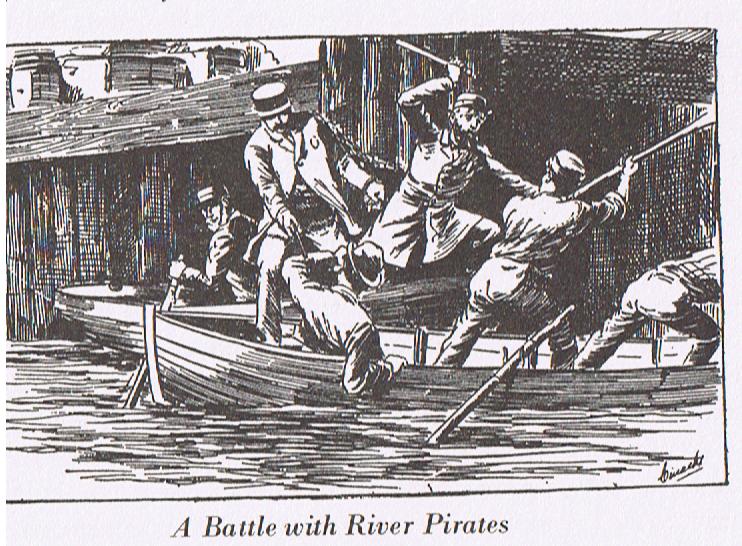Ocean-going pirates and landlubber thieves are common rpg archetypes, but there's another group, less dear to the pop culture imagination, that sort of bridges the gap between the two. The river pirate lurks in that gap, connecting the urban, wilderness, and sea-going adventures into one larcenous tapestry.
This sort of thing has gone on as long as there have been boats and things to steal, of course, but there are some great examples of this from American history. The Cave-In-Rock game operated out of this place on the Ohio River:
The 1790s were the high point of the piracy there. Samuel Mason and his gang robbed flatboats carrying farm goods to markets in New Orleans.
Still, the Cave-In-Rock gang aren't near as colorful as their urban counterparts. Consider
Sadie Farrell (also known as "Sadie the Goat" for her modus operandi of headbutting male victims so her accomplice could mug them), a leader of the Charlton Street Gang. In 1869, the gang stole a sloop on from the waterfront on Manhattan's West Side. They embarked on a piratical spree, reading up and down the Hudson and Harlem Rivers, even going as far as Albany, supposedly. They robbed small merchant vessels, and raided farm houses and Hudson Valley mansions, occasionally kidnapping people for ransom. Sadie was said to have made male captives "walk the plank" on occasion. Eventually, the villagers organized and began to fight back. The gang was forced to abandon the sloop and return to street crime. One assumes it was fun while it lasted.
The
Swamp Angels had an even more innovative approach. Based in a Cherry Street tenement named Gotham Court (also called "Sweeny's Shambles"), the Swamp Angels had a secret entrance to the sewers. There they made their lair and launched their nocturnal raids on the East River docks. Here's what
the chief of police said about them in 1850:
"[they] pursue their nefarious operations with the most systematic perseverance, and manifest a shrewdness and adroitness which can only be attained by long practice. Nothing comes amiss to them. In their boats, under cover of night, they prowl around the wharves and vessels in a stream, and dexterously snatch up every piece of loose property left for a moment unguarded."
The police tried waterfront snipers then sewer raids to fight the bandits on their own turf. Only regular sewer patrols drove the gang from its subterranean lair. Even those didn't end their piratical ways.
More interesting and game-inspiring tales of riverside criminality can be found at your local library. Or the internet.






















